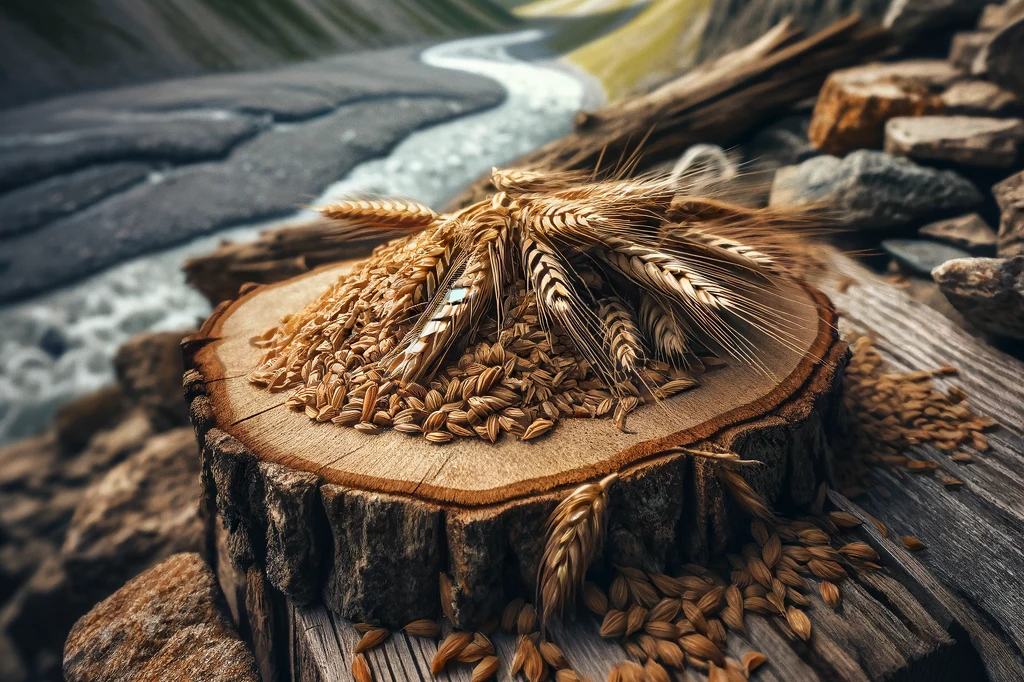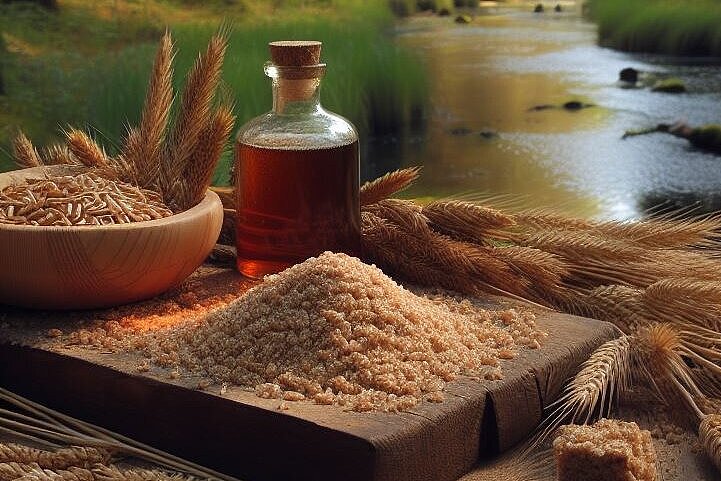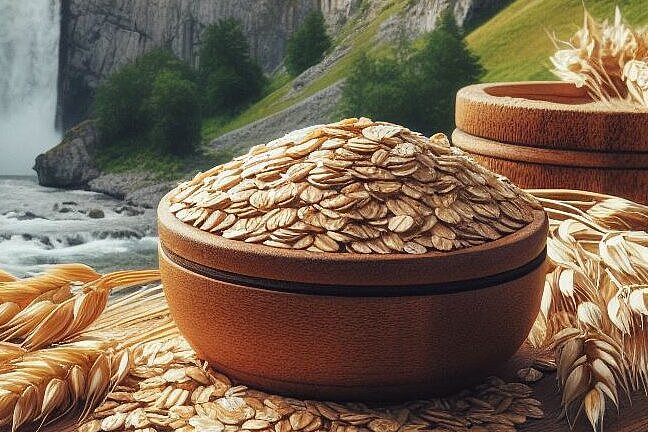Wheat pomace
What is wheat pomace?
Wheat pomace is what remains after wheat has been mashed. The wheat grains are mixed with water and heated to convert the starch into sugar. The sugar is then used for fermentation to produce alcohol. The wheat pomace consists of the solid components of the wheat, such as the hulls, the protein and the gluten.
Wheat pomace still contains around 20% starch and 25% crude protein, as well as fiber, vitamins and minerals. It is often dried or pelleted to make it more durable and easier to transport.
What are the benefits of wheat pomace for dogs?
Wheat pomace can have several benefits for dogs' diets, especially when given as a supplement to a high-quality dog food. Some of the benefits are:
- Energy supplier: wheat pomace provides carbohydrates, which are an important source of energy for dogs. Carbohydrates also help regulate blood sugar levels and support brain function.
- Protein source: Wheat pomace contains protein, which is important for building and maintaining muscles, skin, hair and nails. Protein also supports the immune system and wound healing.
- Fiber source: Wheat pomace is rich in fiber, which can aid digestion and prevent constipation. Fiber also helps to lower cholesterol levels and reduce the risk of cardiovascular disease.
- Source of vitamins and minerals: Wheat pomace contains vitamins such as B vitamins, vitamin E and vitamin K as well as minerals such as iron, zinc, copper and manganese. These nutrients are important for various metabolic processes in the dog's body.
What are the disadvantages of wheat pomace for dogs?
Wheat pomace is not suitable for all dogs and can also have some disadvantages if fed in excessive quantities or as a complete food. Some of the disadvantages are:
- Allergy risk: wheat is a common cause of food allergies in dogs. Signs of a food allergy can include skin problems such as itching, redness and inflammation, and gastrointestinal problems such as vomiting and diarrhea. If your dog shows signs of a food allergy, you should switch their food to a grain-free variety.
- Obesity: Wheat pomace is high in calories and can lead to obesity if fed in excessive amounts. Obesity can increase the risk of diabetes, arthritis, cardiovascular disease and other health problems. You should therefore always make sure you give your dog the right amount of food and weigh him regularly.
- Fluctuations in quality: The quality of wheat pomace can vary depending on its origin and processing. For example, it may contain molds or mycotoxins, which can be harmful to dogs. You should therefore always make sure that you buy wheat pomace from a reputable supplier and store it in a dry and cool place.
How much wheat pomace can I feed my dog?
The amount of wheat pomace you can feed your dog depends on various factors, such as his age, size, activity level and state of health. As a general rule, wheat pomace should only be given as a supplement to a balanced dog food and should not make up more than 10% of their daily calorie intake.
You should also always make sure that you provide your dog with enough fresh water, as wheat pomace binds a lot of liquid and can lead to dehydration. You should also only ever give your dog small amounts of wheat pomace and observe his reaction. If he shows signs of intolerance or allergy, you should stop giving him wheat pomace.
Wheat pomace is a by-product of beer production that is used as feed for farm animals. It can also be suitable for dogs when fed in moderation and as a supplement to a high quality dog food. Wheat pomace can have some nutritional benefits for dogs, such as providing energy, protein, fiber, vitamins and minerals.
However, wheat pomace is not suitable for all dogs and can also have some disadvantages, such as the risk of allergies, obesity and variations in quality. You should therefore always make sure that you buy wheat pomace from a trustworthy supplier, store it properly and only feed it in small quantities. If your dog shows signs of intolerance or allergy, you should no longer give him wheat pomace.
If you notice any signs of hypersensitivity or poisoning in your dog, you should see your vet immediately. We are not a substitute for a vet, but we try to be as accurate as possible. Every dog reacts differently and we recommend you get a second opinion or consult your vet if in doubt.
Stay healthy and take good care of your four-legged friend!😊
Similar to Wheat pomace
Rice bran is the outer layer of the rice grain that is removed during the processing of brown rice into white rice. It consists of the silver skin and the rice germ, which contain most of the...
Barley pomace is what remains after mashing and refining malted barley. The starch and soluble components of the barley are dissolved in water and separated. The insoluble components, such as the...
Rye pomace has several benefits for the health and well-being of dogs: It aids digestion and can prevent constipation or diarrhea by increasing fecal bulk and stimulating intestinal motility.It...
Oat bran is a by-product of oatmeal production. When the oat grain is steamed, rolled flat and dried, oat flakes are produced. During this process, the outer layers of the grain are separated and...



